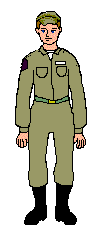Medical Exam
HOW TO IDENTIFY AS TO ONE IS HAVING FLAT FOOT?
If you look at an adult foot from the inside, you’ll usually notice an upward curve in the middle. This is called an arch. When the tendons all pull the proper amount, then your foot forms a moderate, normal arch. When tendons do not pull together properly, there is little or no arch. This is called flat foot.
Test Yourself for Flat Feet :-
- Get your feet wet.
- Stand on a flat surface where your footprint will show, such as on a concrete walkway.
- Step away and look at the prints. If you see complete imprints of the bottom of your feet on the surface, then you’re likely to have flat feet.
Symptoms of Flat Feet –Many people have flat feet — and notice no problems and require no treatment. But others may experience the following symptoms:
- Feet tire easily
- Painful or achy feet, especially in the areas of the arches and heels
- The inside bottom of your feet become swollen
- Foot movement, such as standing on your toes, is difficult
- Back and leg pain
If your flatfeet are painful, your doctor might suggest:
- Arch supports (orthotic devices). Over-the-counter arch supports may help relieve the pain caused by flatfeet. Or your doctor might suggest custom-designed arch supports, which are molded to the contours of your feet. Arch supports won't cure flatfeet, but they often reduce symptoms.
- Stretching exercises. Some people with flatfeet also have a shortened Achilles tendon. Exercises to stretch this tendon may help.
- Supportive shoes. A structurally supportive shoe might be more comfortable than sandals or shoes with minimal support.
- Physical therapy. Flatfeet may contribute to overuse injuries in some runners. A physical therapist can do a video analysis of how you run to help you improve your form and technique.
Surgery
Surgery isn't done solely to correct flatfeet. However, you might have surgery for an associated problem, such as a tendon tear or rupture.


